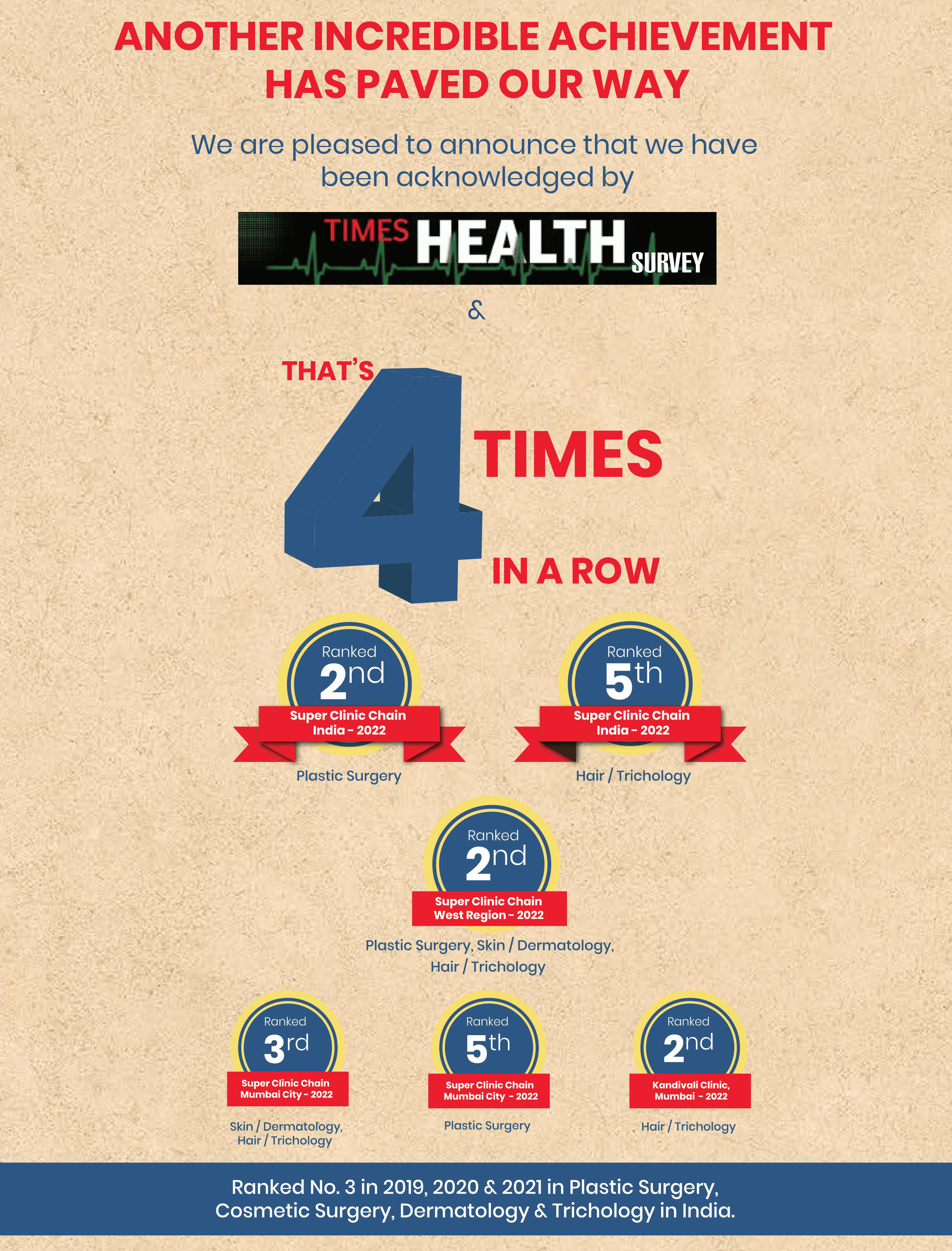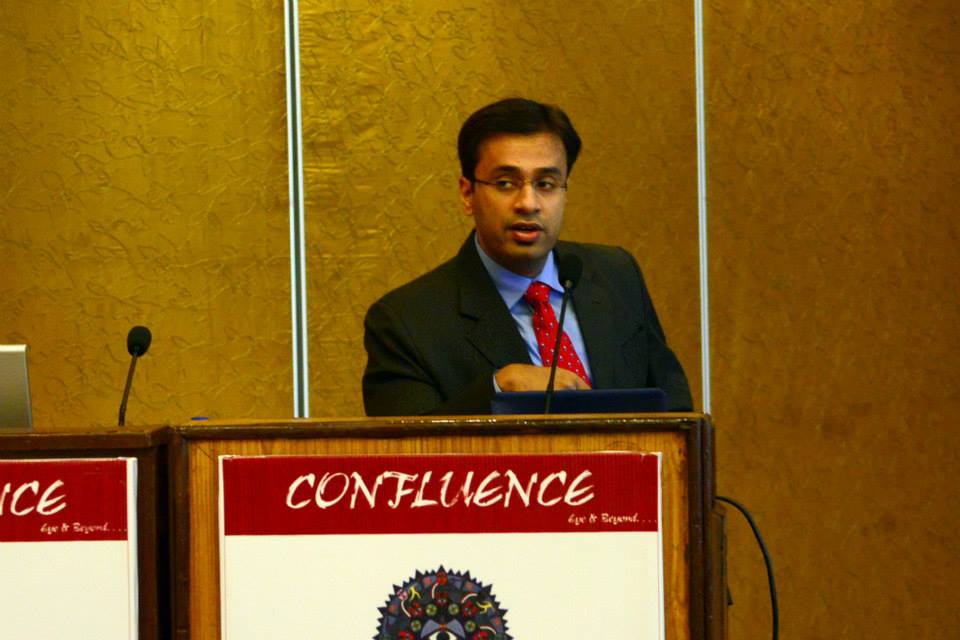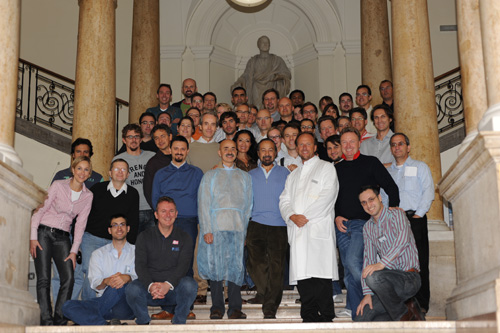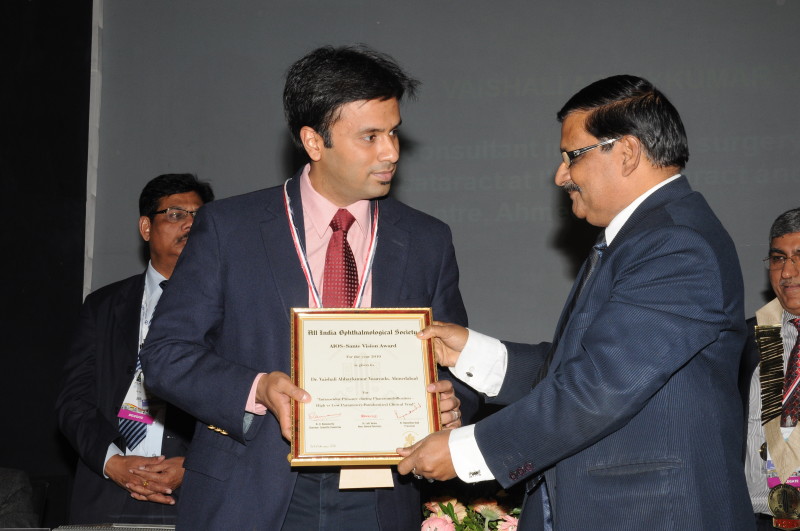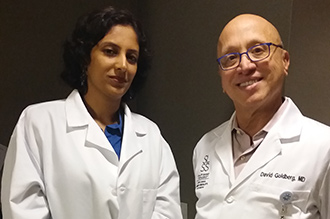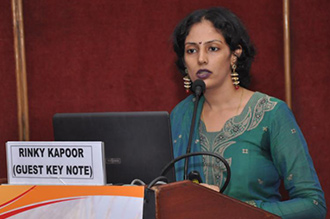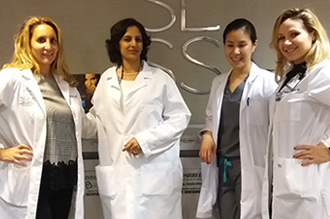Enucleation is a surgical procedure directed at removing the eye to address specific health complications. It has been widely adopted in the management of severe glaucoma and in cases whereby large-sized tumours are present in the eyes. This procedure is particularly recommended in the management of retinoblastoma, and it may be seen as the last resort as the chances of preventing the eye from tumour invasion fade away. Loss of vision is evident after enucleation, and patients will often undergo ocular prosthetics to regain some cosmetic outlook.
While the loss of vision is inevitable after enucleation, there are a couple of complications that could arise with the procedure. Some of these (complications) include:
A dot of irritant present in or around your eye will definitely cause you to react in some ways; this only goes to show how sensitive the eyes are. This may, however, be more far-reaching under certain circumstances wherein a part [of these sensory organs] is having a defect. Such cases will warrant seeking treatment, and talking about a significant eye therapy you may need to consider, we have elected to buttress on entropion repair. Entropion repair is a therapeutic intervention directed at correcting a condition whereby the eyelid is turned (unusually) inwards – entropion. This condition results in keratoconjunctivitis as the affected area becomes red upon the skin of the eyelid along with the eyelashes rotating inwards.
There are three types of entropion that have been reported thus far; these are:
As it is the norm when attempting to do any surgery, you will have to go and see a surgeon at the clinic nearby. In the context of entropion repair, an oculoplastic surgeon should attend to your case, and he/she will seek to gain some knowledge of your medical history. Broadly speaking, you will be asked questions that border on the past health condition(s) you might have had, as well as the state of your eye and other components [of the eye].
You will be asked to provide information about the kind of medications you have been using – you should consider taking these drugs along with you. You should try as much as you can not to leave out any detail, and you should feel free to ask the attendant surgeon questions to clear your doubts.
The surgeon will then have you go for some clinical examinations; special photographs of your eyelids and face will be taken for the surgeon to further evaluate your situation – an ophthalmic examination will also be carried out. Once it has been ascertained that it is alright for you to have the surgery for entropion repair, the surgeon will proceed to fix the date for the operation.
Towards the set date; it is advised that you stop using certain drugs – e.g., aspirin-containing drugs, blood-thinning drugs, anti-inflammatory drugs, and anticoagulants – two weeks before the operation. The surgeon will educate you more on this and even discuss the steps entailed in the procedure that would be performed on you. The advantages and possible risks associated with the selected procedure are parts of the things the surgeon will discuss with you.
Various methods/protocols have been adopted in treating entropion – from the simple ones to those that are relatively advanced. A common home remedy that is often used is to tape the eyelid to the cheek thus preventing it from having contact with the globe. Botulinum Toxin Type-A (BoNT-A) injections also offer some therapeutic relief to entropion patients. The mechanism behind the effectiveness of BoNT-A injection is that it weakens the muscles that are responsible for the inward rotation of the eyelid thereby making the lid to be more relaxed. These injections, however, need to be given every three months to sustain a favourable outcome.
Symptoms
The following are the signs and symptoms that normally accompany entropion:
Surgical procedures remain the best form of treatment for entropion as it guarantees a lasting (favourable) result. However, you should be mindful of the fact that changes – which may affect the functionality of your eyes – may evolve as you age. Several entropion repair procedures have been defined and utilized to varying degrees. We have briefly described three of these (procedures) below:
Lateral tarsal strip procedure: The lateral tarsal strip procedure is an eyelid tightening intervention that has been utilized to great effect. The surgeon will make markings around the lateral area where the margins of the lower and upper eyelids meet. After this, the anaesthesiologist comes around to administer local anaesthesia to numb the surgical area, and the surgeon continues by making an incision through the outer corner of the eye as he/she attempts to gain access to the tendon. The tendon is then stretched in such a way that fulfils the shortening degree attainable for proper eyelid tension, and the surgeon eventually proceeds to shorten the lateral tarsal strip. The anterior lamellar flap created as a result of the dissection is now trimmed. The suspension of the tendon at the outer corner of the lower eyelid is then achieved, with the surgeon using layers of dissolvable stitches to close up the incision. The surgical area is then cleaned up and the surgeon places a(n) (eye) patch over the area. There are, however, occasions wherein the surgeon may choose to adopt the everting suture protocol – which is summarized below – to augment lateral tarsal strip procedure for improved (positive) outcome.
Everting suture Procedure: This is a straightforward technique that can be performed in the space of a couple of minutes in the surgeon’s office. The surgeon will have the patient lay down and apply numbing drops to the surgical area. After this, he/she places dissolvable sutures inside the eyelid to turn it outward and hold it (that is, the eyelid) down as such, thus ensuring that the eyelashes are prevented from irritating the eye.
Quickert Procedure: The quickert procedure, which is sometimes referred to as “double-armed full-thickness everting sutures”, has been effective in correcting involutional entropion, and it is also applied in cases where entropion is recurring. After anaesthetization, the oculoplastic surgeon will make an incision across the eyelid border and then the ends of the eyelid before proceeding to excise excessive tissues. The cut ends are then re-attached with a double-arm dissolvable suture. The eyelid margin and incision are subsequently sutured – with dissolvable and non-dissolvable sutures in respective order. However, it needs to be stated here that while the Quickert procedure takes care of the inwardly turned eyelid, it fails to address the horizontal slackness noticeable in cases of involutional entropion.
Our surgeon will provide you with some prescriptions which may include antibiotics and steroidal ointment. Besides this, you should avoid getting your eyelid wet after the operation. Bruising and swelling are normal occurrences after entropion repair – applying cold compresses can help reduce swelling. The (eye) patch placed over the affected eye will be removed in 1 - 2 week(s) after surgery. You should take care to wash your hands thoroughly and maintain a hygienic condition whenever you wish to take off the patch before the set time. Furthermore, you should desist from engaging in any strenuous physical exercises for the time being – probably for the next 2 – 3 weeks after the operation. To aid your recovery, you should not wear make-up on your eye neither should you expose your face to the sun. Alcohol should also be avoided for a couple of weeks.
The actual price will be majorly determined by the severity of the patient’s condition, as well as the number of treatments that will be selected considering that you will need to undergo other interventions along with entropion repair to get a desirable outcome. Additional cost will, however, be accrued from other aspects like the distance between your home and the clinic, possible hospital stay – although rare – and the duration of the follow-up session.
Entropion repair assures immeasurable restorative outcomes – but this can only be achieved when it is performed by a team of experts that understands the anatomy of the eye to an appreciable degree. This is exactly where Dr. Debraj Shome – a dedicated and well-respected professional whose exploits [in the field of oculoplastic and cosmetic surgery] have seen him attained a celebrity surgeon status – comes in. And, he is not alone at The Esthetic Clinics; we also have plastic surgeons with vast experience. So, all in all, you can have access to quality entropion repair nearby in India at our medical facility. From the point of diagnosis to follow-up, we are duty-bound to see to it that you have an outcome that you will be satisfied with – both in terms of functionality and aesthetics.
The preoperative appointment you will be having with the oculoplastic surgeon will be geared at developing an enucleation procedure plan for you. More so, the surgeon will, through this session, hope to check if some underlying medical conditions/complications might be responsible for the problem. Once all these have been sorted, a date will be fixed for your operation and the surgeon will brief you on what enucleation entails, to the extent of giving some tips on how to prepare for the procedure.
If you are using a blood-thinning medication – like aspirin, coumadin, heparin, etc – you will need to discontinue the usage at least two weeks before the procedure is performed on you. The reason boils down to the fact that such drugs can contribute to the emergence of postoperative haemorrhage which is usually painful.
Enucleation is usually done under general anaesthesia, and it involves a series of surgical steps leading to the fixation of the eye implant. The implant can be inserted using different techniques – the imbrication technique, mycoconjunctival technique and integrated implant technique. In the imbrication technique, the rectus muscles are made to overlap one another in anticipation of the placement of a non-integrated implant; this setting ensures that the implant moves in tandem with the prosthesis. The proficiency of this movement is, however, undermined by the anatomic construct of overlapping muscles as the implant and prosthesis are partitioned by the eyeball’s fascial sheaths. Again, the incidence of implant dislodgment is quite high with this particular technique. Like the imbrication technique, mycoconjunctival technique is also a non-integrated sort, and it involves the suturing of the inferior, superior, lateral, and medial recti muscles away from the conjunctival fornices. The probability of implant moving out of position with this technique is also high. Lastly, we have the integrated porous technique which involves the repositioning of the inferior and superior oblique muscles, as well as the direct suturing of the four recti muscles to the scleral cap – this helps to keep the implant in a more central position. This integrated technique is considered to be the best implant fixation technique as it minimizes the incidence of implant displacement. However, it could cause the implant to become exposed with time, and it is usually more invasive than the other two (techniques).
To the enucleation procedure; once the effect of the anaesthesia has set in, the oculoplastic surgeon will perform a periotomy which involves making an incision around the limbus – that is the margin that exists between the transparent cornea and the opaque part of the sclera. This incision enables the surgeon to gain access to the conjunctiva and Tenon’s capsule, even as the extraocular muscles are exposed. Periotomy is completed with the surgeon resecting the conjunctiva from the corneal limbus. The surgeon will then move on to dissect the Tenon’s capsule from the globe and then set apart the four recti muscles using a dissolvable to hold them off. The integrity of the conjunctiva and Tenon’s capsule must not be compromised while this is done as both structures are vital to the implant’s closure. The muscles, which are now fastened, are then cut transversely. The surgeon will proceed to gently pull the globe upwards using forceps even as the stumps of the lateral and medial recti muscles are grasped. Thereafter, a haemostat is used in noodling the optic nerve behind the globe. The optic nerve is then temporarily fastened with the surgeon pushing the haemostat backward, and an optic nerve stump is gotten as the specialist cuts across the optic nerve. A pair of surgical scissors is then used in trimming remnant soft tissue. While this is done, the surgeon should be careful not to overly reduce orbital fat – an action that may create marked hollow in the superior sulcus. The next port of call is the transection of the two oblique muscles – achieved as the surgeon cuts across the muscles. The surgeon will then load the orbit with surgical sponges that have been saturated with local anaesthetic-epinephrine formulation, and haemostasis is actualized with the aid of high-frequency electrocautery.
The surgeon will move on to use a sizer – a dummy implant – to find out the appropriate size of the orbital implant that would be required to fill up the orbit and also allow for the (subsequent) suturing of the anterior layers of Tenon’s capsule without any form of tension. After the needed size of implant has been realized, the surgeon will insert it (that is, the implant) into the socket – at a depth that is beyond that of the posterior Tenon’s layer – resorting to any of the fixation techniques described earlier. Thereafter, the Tenon’s capsule is closed using dissolvable interrupted 5-0 sutures while the conjunctiva is then closed up with a 6-0 suture – this may, however, vary based on the fixation technique selected. An adequately sized conformer is usually inserted into the conjunctiva that has been sutured to help maintain the conjunctival fornices and also get them ready for the integration of the prosthesis – which often takes place 6 – 8 weeks after the enucleation procedure has been completed. The surgeon will eventually have an eye patch over the surgical area – this may remain on the patient for 2 – 5 days. Meanwhile, there are occasions whereby the prosthesis may be inserted immediately after enucleation is completed, and in some other instances, the prosthesis is fixed after the eye patch is removed.
Following the completion of your enucleation, the oculoplastic surgeon will give you some prescriptions [like steroid and topical antibiotics] which are very instrumental for your recovery. That apart, you will need to return to the clinic in about five days to have the bandage placed over the operated eye(s) removed, with the ocular prosthesis being placed over the orbital implant. You should understand that it is not uncommon to have tears with some traces of blood emerge as the eye pad is taken off.
Some other tips that will be helpful for your recovery are now highlighted below:
The recovery period for enucleation is between 4 – 6 weeks, but you should be able to fully resume regular activity – work or academic – 2 weeks after the operation. Having said that, you should be mindful that the surgeon will fix the follow-up sessions for you at different intervals to examine your recovery status and also see if there is tumour recurrence. Nonetheless, ensure that you contact the clinic to report any unusual changes or reactions you may be feeling while recovering.
Although the loss of vision is inevitable, it is important that you seek out the best enucleation surgery plan that would avert the incidence of any untoward complications. This is what The Esthetic Clinics nearby has set out to ensure – complication-free enucleation procedure in India. We founded on the principles of excellence and professionalism with our plastic surgeons, cosmetic surgeons and other medical staff seeing to the surgical/medical service needs of a host of patients. Our high standard and quality assurance have set us apart over the years. In Dr. Debraj Shome, we have a celebrity oculoplastic and cosmetic surgeon, who has authored several publications and is a recipient of a couple of notable rewards. The Esthetic Clinics, with state-of-the-art facilities and equipment, ranks among top medical/surgical centres in the world today, and we are ever ready to treat your case with the urgency it deserves.
The cost of enucleation surgery will be largely determined by implant fixation technique selected, as well as the size of the implant needed. Also, other factors like severity of your condition and surgeon’s fee may also influence your enucleation surgery price.


Dr. Debraj Shome is Director and Co founder of The Esthetic Clinics. He has been rated amongst the top surgeons in India by multiple agencies. The Esthetic Clinics patients include many international and national celebrities who prefer to opt for facial cosmetic surgery and facial plastic surgery in Mumbai because The Esthetic Clinics has its headquarters there.
